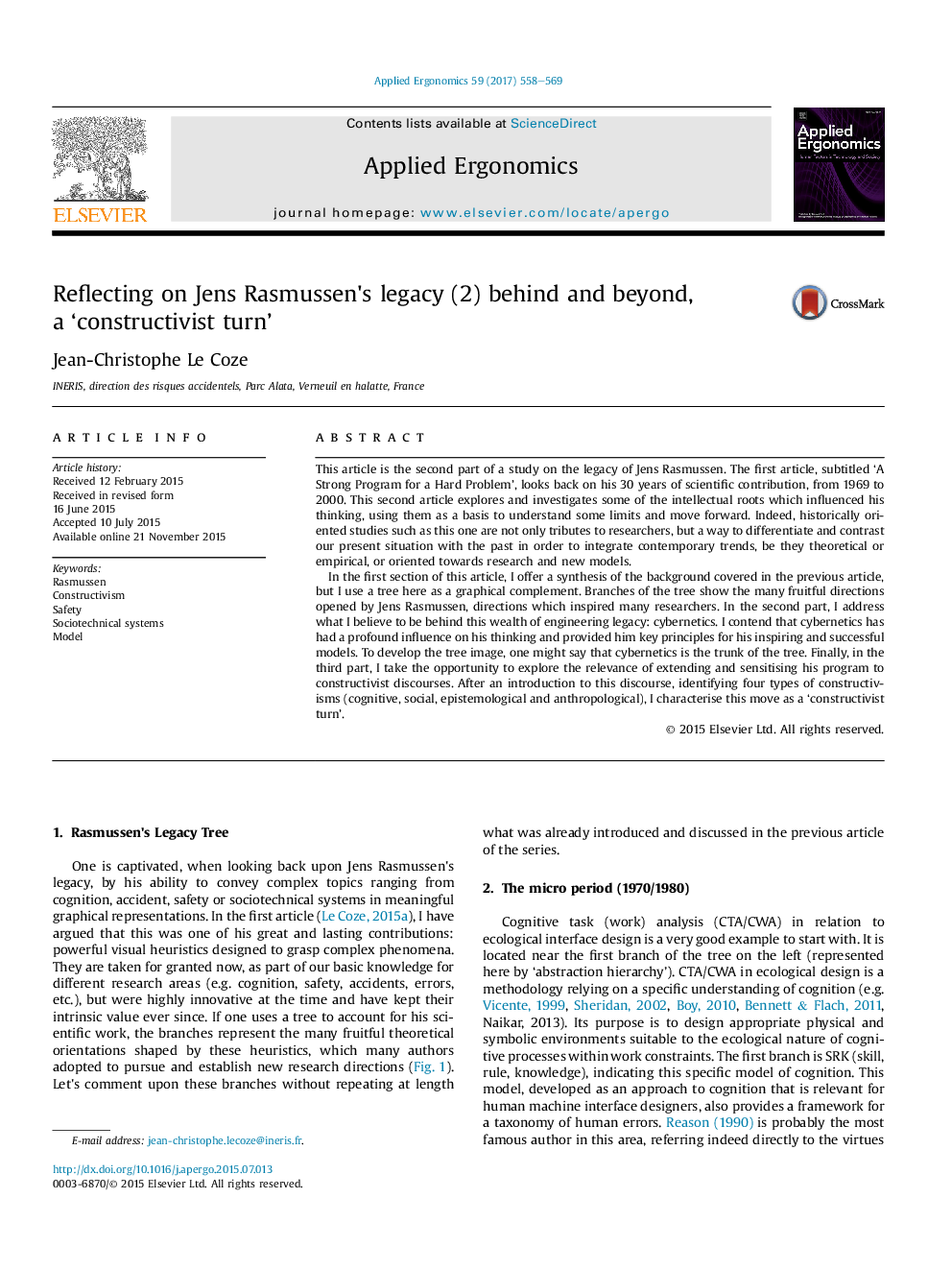| کد مقاله | کد نشریه | سال انتشار | مقاله انگلیسی | نسخه تمام متن |
|---|---|---|---|---|
| 4972136 | 1365393 | 2017 | 12 صفحه PDF | دانلود رایگان |
- This article is the second part of a study on the legacy of Jens Rasmussen.
- The first article looks back on his 30 years of scientific contribution, from 1969 to 2000.
- This second article explores and investigates some of his intellectual roots.
- It uses them as a basis to understand some limits and move forward.
This article is the second part of a study on the legacy of Jens Rasmussen. The first article, subtitled 'A Strong Program for a Hard Problem', looks back on his 30 years of scientific contribution, from 1969 to 2000. This second article explores and investigates some of the intellectual roots which influenced his thinking, using them as a basis to understand some limits and move forward. Indeed, historically oriented studies such as this one are not only tributes to researchers, but a way to differentiate and contrast our present situation with the past in order to integrate contemporary trends, be they theoretical or empirical, or oriented towards research and new models.In the first section of this article, I offer a synthesis of the background covered in the previous article, but I use a tree here as a graphical complement. Branches of the tree show the many fruitful directions opened by Jens Rasmussen, directions which inspired many researchers. In the second part, I address what I believe to be behind this wealth of engineering legacy: cybernetics. I contend that cybernetics has had a profound influence on his thinking and provided him key principles for his inspiring and successful models. To develop the tree image, one might say that cybernetics is the trunk of the tree. Finally, in the third part, I take the opportunity to explore the relevance of extending and sensitising his program to constructivist discourses. After an introduction to this discourse, identifying four types of constructivisms (cognitive, social, epistemological and anthropological), I characterise this move as a 'constructivist turn'.
Journal: Applied Ergonomics - Volume 59, Part B, March 2017, Pages 558-569
